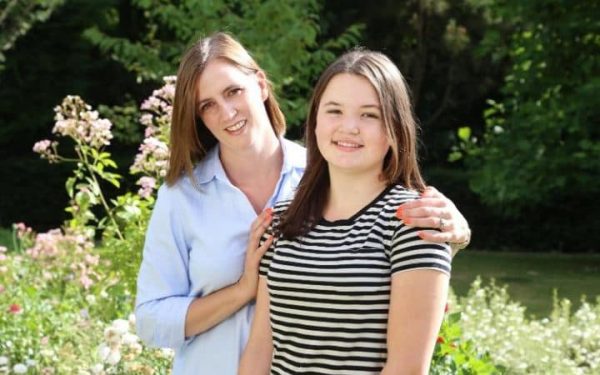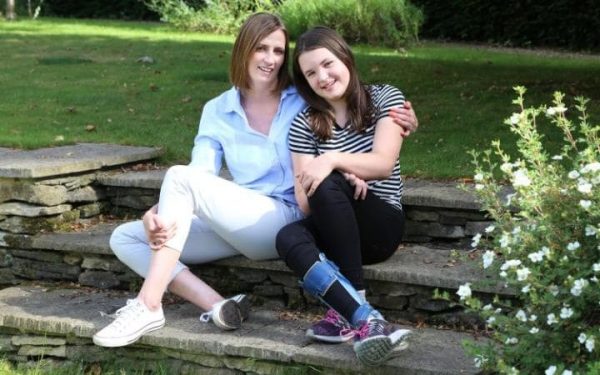Maddie Greenwood’s world is filled with music, fashion and friends. A keen swimmer and horse rider, she loves taking pictures on her phone and, her mother Claire Redfern admits, “ she can have a bit of a temper”. She is – if such a thing exists – a typical 12-year-old girl.
Nine years ago, Maddie had a stroke. Today, she pursues her interests with determination, but hampered by its long-term effects. A splint supports her right leg and foot, she has little use of her right hand, and she finds school work challenging and tires easily.
Stroke is the UK’s fourth largest cause of death and Maddie is one of 400 children to have one each year. Yet awareness of its incidence in young people remains low. Delays in diagnosis and treatment, and patchy provision of support, have compromised long-term outcome for many of them.
New guidelines issued by the Royal College of Paediatric and Child Health (RCPCH) aim to improve this by heightening awareness and knowledge among professionals, and equipping parents with clear information.
They also give the green light to clot-busting treatments used in adult stroke but previously not recommended in children – thrombolysis and thrombectomy – in cases caused by a blockage rather than a bleed (in around half of children, and 80 per cent of adults).
All this, says Claire Redfern, is welcome news. She admits to once being among the masses who weren’t even aware that stroke can occur in childhood and, she adds, even many healthcare professionals are unsure of the signs.
Even after diagnosis, accessing continued support for Maddie has been a battle. “When she was 10 the occupational therapists wanted to sign her off. She wasn’t using her hand. How can that be right? You are supposed to be entitled to continued rehabilitation if you have had a stroke. But trying to get it is another story.”
The possibility of stroke was first mentioned to Claire 24 hours after she ran into her local A&E – then in Kingston-upon-Thames, though the family now lives in Oxford – holding Maddie in her arms.
Unusually (“she was a seven to seven baby”) Claire had woken Maddie, then three, at 8am on a Sunday, finding her unresponsive. Claire and her then husband, Marcus were concerned and called the NHS non-emergency number 111. The call handler advised taking Maddie to hospital at once.
“As soon as they saw her they hooked her up to monitors. She seemed to be going in and out of consciousness. It was very scary.”
Doctors suspected an infection or virus. “It wasn’t obvious there was any one-sided weakness because she was limp all over,” recalls Claire.
The following morning, Maddie was seen on the consultant’s ward round. “She told me she suspected a stroke and that Maddie needed a CT scan,” says Claire. “If this indicated a stroke she would be transferred to a specialist neuro paediatric centre for MRI scan.
“I was in disbelief. I thought stroke only affected the elderly.”
Brain imaging is the only way to diagnose stroke, and the delay in its use on children is a key factor in shortcomings around identification and treatment. One of the RCPCH recommendations is that all children in whom stroke is suspected, should have a CT scan within one hour of arriving in A&E, even in the absence of the widely-known FAST signs (‘Face, Arms, Speech, Time to call 999’).
Realising that her daughter must be hungry, Claire brought her a bowl of cereal. “Maddie used her left hand and shovelled it into her mouth. Half fell out. She was grinning, but only on the left side. It was suddenly so obvious and very frightening.”
The CT scan showed that the consultant’s suspicion was probably correct, and Maddie was transferred to St George’s in south London, where a specialist bed was available. An MRI under general anaesthetic was done the following morning.
“The consultant neurologist explained that a clot had travelled to Maddie’s brain and she’d had a significant stroke,” says Claire. “It was so much to take in. I remember pictures of a brain and there was a big black bit where her tissue had effectively died.”
No reason was found for Maddie’s stroke, which is not uncommon. The causes of childhood stroke remain a key area of research but are known to include inflammation after an infection, blood clotting or blood vessels disorders, and congenital heart disease.
 Yaspan Tech, Computers, Gadgets, Reviews, News and Analysis
Yaspan Tech, Computers, Gadgets, Reviews, News and Analysis







